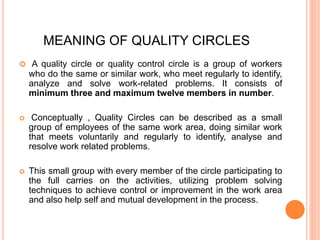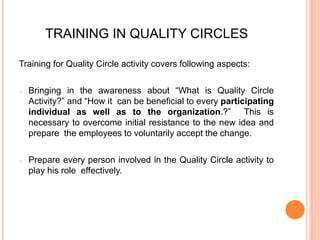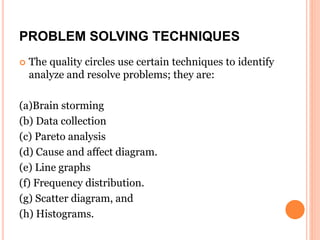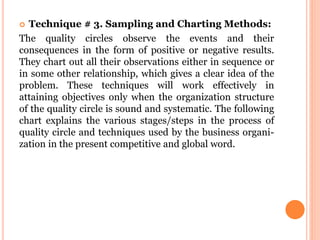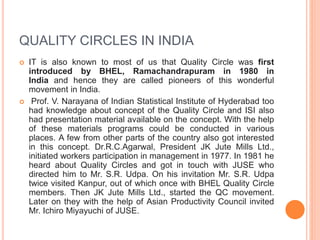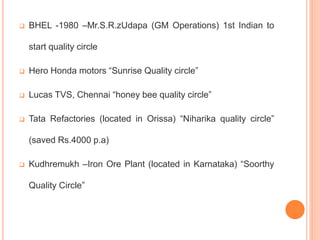The document discusses quality circles, which are small groups of employees who meet to identify and solve work-related problems, emphasizing collaboration and mutual development. It outlines the features and objectives of quality circles, including improving quality, productivity, and employee morale, and highlights the management's role in fostering these circles. Additionally, it provides an overview of trade unions, their objectives, and the history of quality circles in India, notably their introduction by BHEL in 1980.


